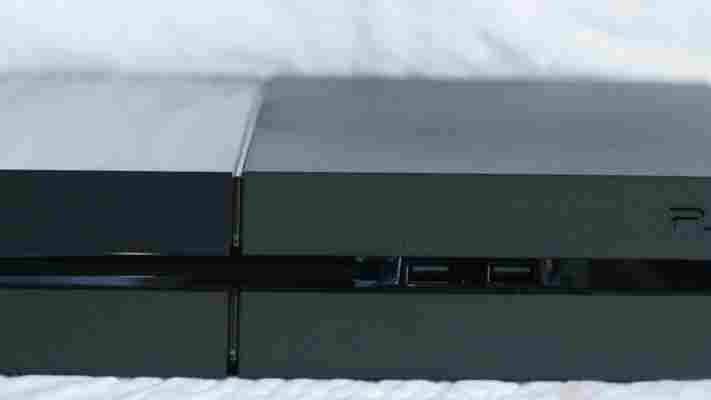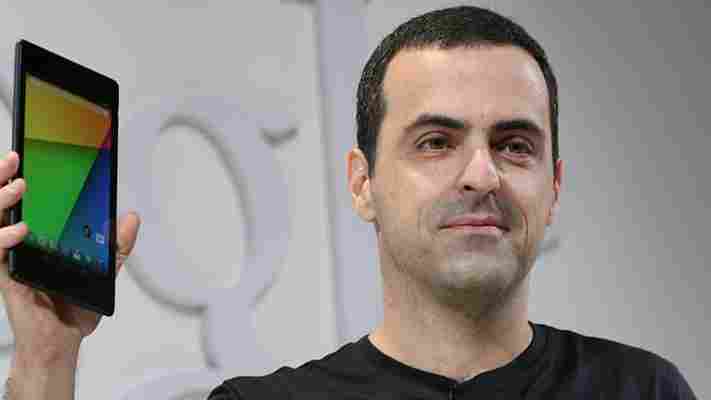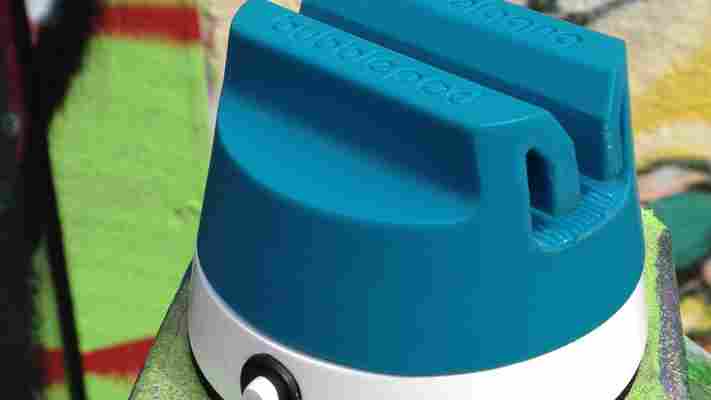We spent Friday getting to know the PlayStation 4 , just like many of you did. It’s still too early for a review, but here are our first impressions of the console and its launch.

The hardware looks good. It’s actually much more reminiscent of the PS2 than the PS3 for me, though much sleeker. I was disappointed by the almost microscopic Power and Eject buttons, though. You have to dig your nail in to actually press them, and even then it’s not clear whether they’ve actually triggered. Coupled with some of the HDMI connection issues that I experienced (more on that later), it was frustrating not to know whether it was the button or the console that wasn’t responding.
The day one update came in at 323MB. It downloaded in about five minutes on launch day, but it failed several times before finally going through.
I’m really impressed with how the DualShock 4 has been redesigned. It feels great and new features like the touchpad and lightbar are nice touches without being distracting or gimmicky.
Sony touts the PS4, with its 8GB of RAM and eight-core CPU, as having 10 times the computing power of its predecessor. It’s actually quite remarkable what the firm managed to pack into the console at a $399 price. That full potential isn’t being harnessed yet, but the games do, of course, look good.
Unliked Microsoft and the Kinect, Sony’s PlayStation Camera isn’t as essential to the overall experience. You’ll get face recognition for your profile, and the camera can match you up with your controller using the lightbar. Voice commands are a nice touch, but they’re fairly barebones. It’s a tough sell at the moment since you’ll need to spend an extra $59.99 for it.
We didn’t get a chance to test the Remote Play integration with the PS Vita, but so far we’re hearing good things about it. I suspect the feature is going to give the Vita a new lease on life.
We tested Knack , Killzone: Shadow Fall and Call of Duty: Ghosts . I had quite a bit of trouble with Knack, enough so that I didn’t make it very far in the game. One point in the game kept freezing and eventually crashed. The game is fun for the family, but there’s very little about it that screams next-gen.
Killzone has been left to carry the PS4 exclusive mantle while we wait for Drive Club and Second Son to arrive next year. The game has some gorgeous moments that really show off the new hardware, and a couple interesting mechanics like the use of the DualShock 4’s new lightbar to give you health alerts. The OWL drone adds some variety, but the gameplay can still get stale at times.
Call of Duty also looks fantastic. If you’re curious what kind of improvement it is over the last generation, Gamespot has a great side-by-side comparison video of the Xbox 360, PS3, PS4 and PC versions.
Sony maintains that less than 0.4 percent of PS4 owners have experienced technical issues at launch, but there do seem to be some problems with the console. Issues like PSN connectivity can be chalked up to launch period teething problems, but I’ve had the system drop its video connection several times. It took several reboots and fiddling to get it to come back on.
Between not being able to log onto PSN, having to start at the beginning of Knack several times because it kept crashing, and the HDMI output cutting out, I spent a large part of the day troubleshooting the console instead of actually using it. I certainly expect the Xbox One to have its own share of day one hiccups, but I was left with the feeling that the PS4 was rushed out the door for the holidays. Assuming that none of the issues are hardware related, Sony should be fixing these problems as the platform matures, but it’s something worth considering for those of you who are already taking a wait-and-see approach.
The PS4 is undeniably full of potential, and I’m confident it will emerge as the platform for living room gaming over the next few years. However, much of that potential remains untapped at launch. Upcoming exclusives and the Gaikai cloud gaming service will bring plenty of value to the PS4, but not until next year. Considering how large a gamer base the previous generation of consoles built up over the past few years, game studios had an awkward transition ahead of them in the move to next-gen this holiday season. It’s nice to see blockbusters like Assassin’s Creed IV: Black Flag and Battlefield 4 on both generations, but that also cuts into some of the shiny newness of it all.
The sense we got from our first few hours with the console is that Sony optimized its console for gaming without locking down any truly remarkable exclusives at launch. Building a console is a long-term play, so there isn’t much to be worried about, but new PS4 owners might be stuck wondering what they can do with their new gadgets for the next few months.
See also: This is what the PlayStation 4′s Facebook integration looks like and An occasional gamer’s guide to buying a next-gen console: PlayStation 4
The 2013 Nexus 7 with 4G LTE goes on sale in the US via Google Play for $349, coming to T-Mobile stores in October
Google today released the 2013 version of its Nexus 7 with 4G LTE in the US. You can grab it now from Google Play for $349.

That’s the price of the 32GB version with 4G on T-Mobile; for reference, the Wi-Fi models go for $229 (16GB) and $269 (32GB). At the same time, Google also confirmed the device will be coming to T-Mobile stores in the US next month.
Google is planning a broad international rollout for the Nexus 7, but hasn’t detailed timing. Canada has the Wi-Fi models , and we’ll keep you posted as we learn of more launches.
See also: Google unveils thinner, lighter Nexus 7 successor with 1080p display and 5MP camera, starting at $229.99 and Google officially unveils Android 4.3 with restricted profiles and Bluetooth Low Energy support
Top Image Credit: Justin Sullivan/Getty Images
BubblePod is a wind-up turntable that captures perfect 360-degree panoramas with your smartphone
Creating 360-degree panorama photographs has never been a simple experience, requiring specific apps, a very steady hand and a post-production stitching process that is often long and arduous.

BubblePix has launched BubblePod , a silicone smartphone grip and turntable, on Kickstarter to solve this very problem. It works in partnership with the company’s BubblePix app – which already exists alongside a 360-degree lens accessory called BubbleScope – to offer users professional panoramas in mere seconds.
The user winds-up the BubblePod, rather like an egg timer, before firing up the app and hitting the small button nestled on the base of the unit. The turntable then rotates a smooth 360-degrees, in utter silence, shooting a series of images and stitching them together automatically.
The result is a perfectly flat and ultra high-resolution photograph. It’s a huge improvement on the BubbleScope actually, which shot images and videos simultaneously using a single file.
Creating impressive panoramas has always been a problem because of the natural adjustments and movements made with the human hand. Images were never flat and maintaining the same vertical position after spinning around meant that they never joined up properly at either end.
The BubblePod avoids all of these issues and, perhaps most importantly, does it all automatically. It means the photographer can set it up quickly and then step away to become a part of the final image – perfect for capturing parties or a simple group shot.
The silicone grip is pretty flexible too, which means that it can hold a wide variety of smartphones securely. It also relies solely on a human wind-up, so there’s no batteries or charging to worry about.
Budding photographers will also be pleased to hear that there’s a universal tripod mount on the base, giving the user a more controlled exposure. Our favorite feature, however, is the wine bottle insert mount designed specifically for ’round the dinner table’ moments.
BubblePix is also developing a wide-angle lens to help users capture an even larger vertical field of view. “Our wide-angle lens has our own custom optical design that has been specifically tailored to match the characteristics of smartphone lenses but allowing for the small variations you get between models,” an update on Kickstarter reads.
“Critically there’s no chromatic aberration (phew…) and distortion is minimal but because we know the specific characteristics of the lens optics, our App is also being tailored to work with it and reduce any optical distortion even further so you just get an image that looks right.”
The BubblePix app is available on iOS, Android and BlackBerry 10, so Windows Phone users will be unable to use the BubblePod at launch. “We do want a Windows Mobile app and it is planned we just don’t have timescales yet,” the company says. “We are hoping to make it a specific stretch goal after our wide-angle lens!”
Backers can reserve a BubblePod immediately – the lowest tier is £20 – and also give feedback based on the color schemes and variants they would prefer. The first devices are expected to start shipping in September 2013.
Image Credit: BubblePix
